Yellow-legged Gull Larus michahellis
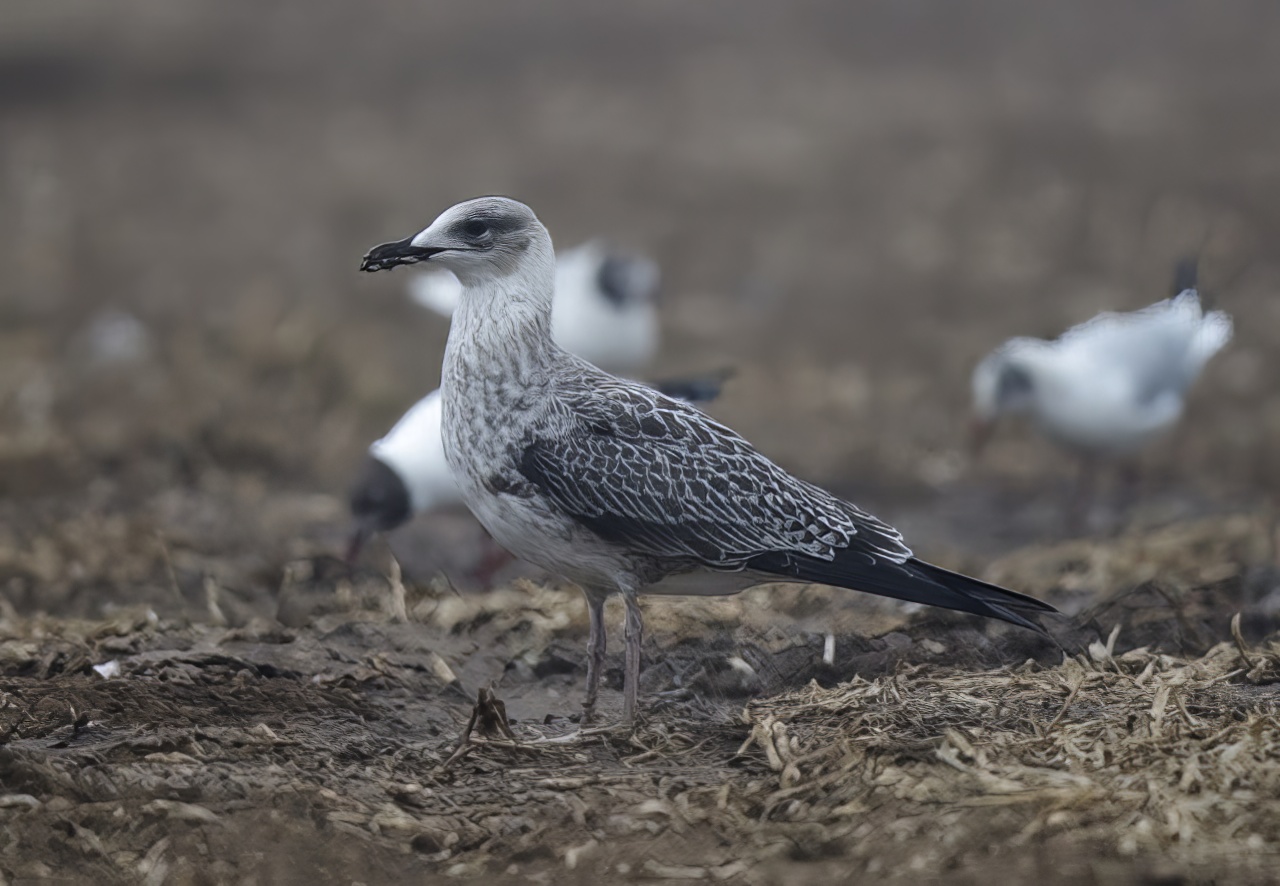
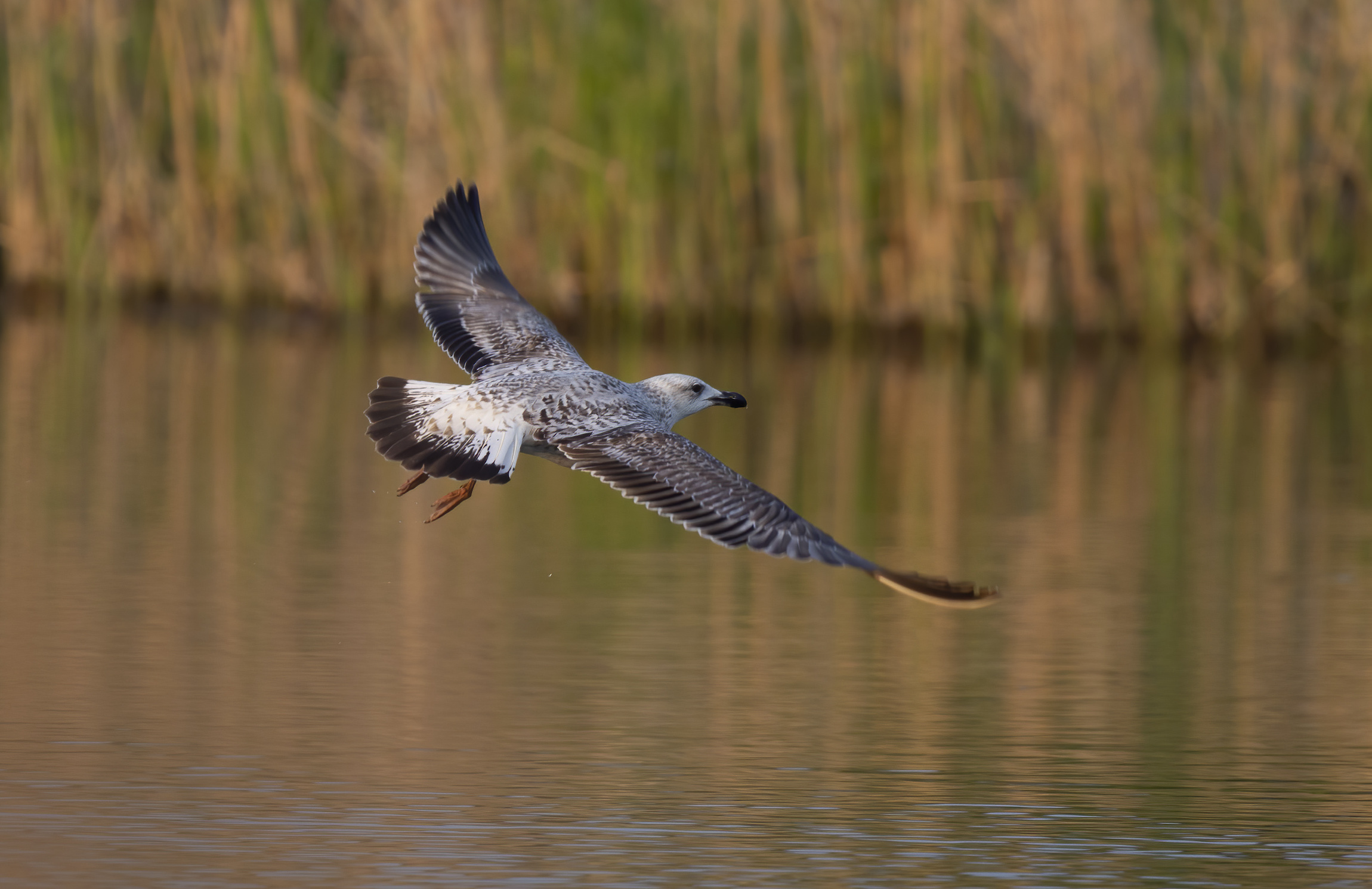
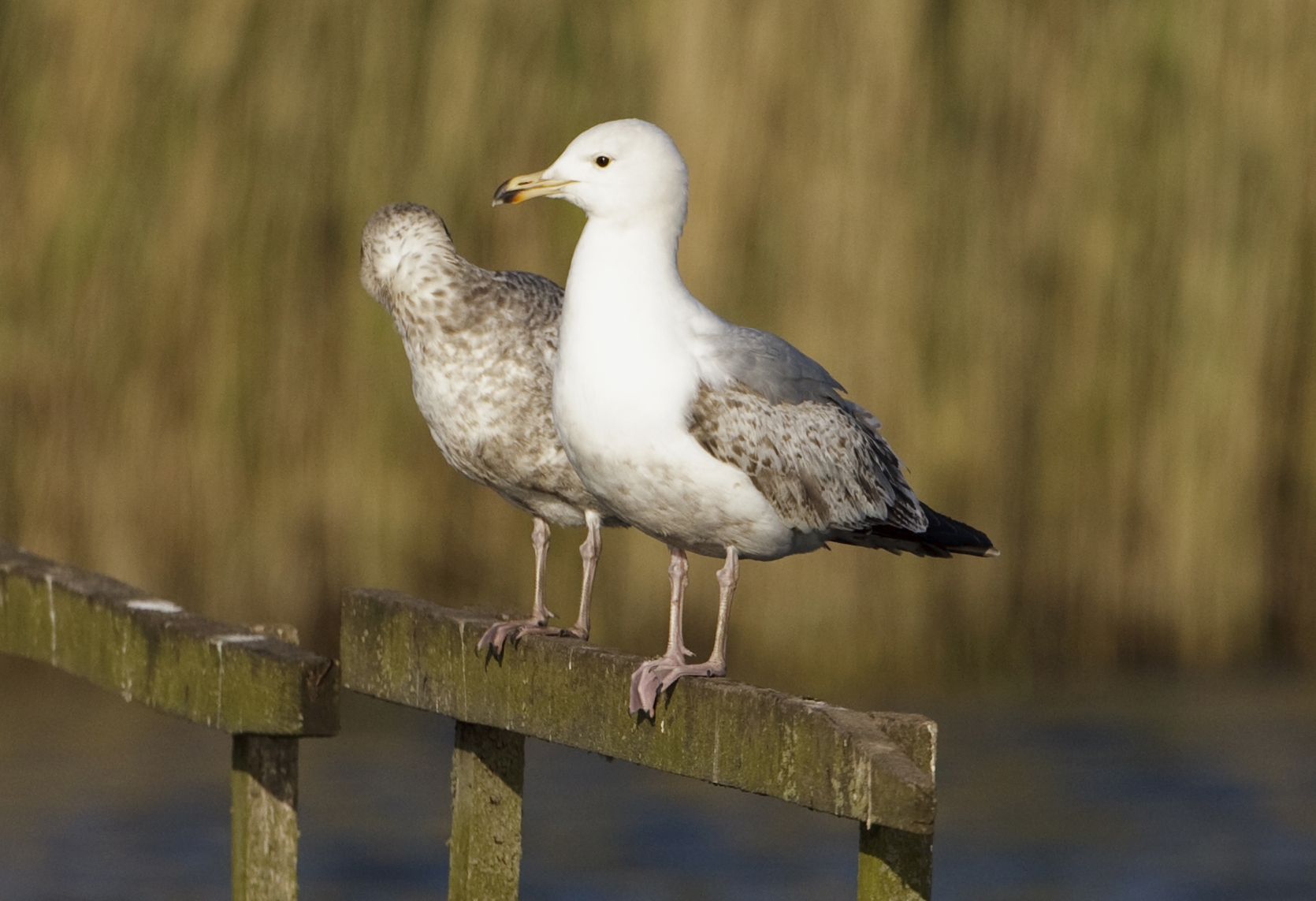
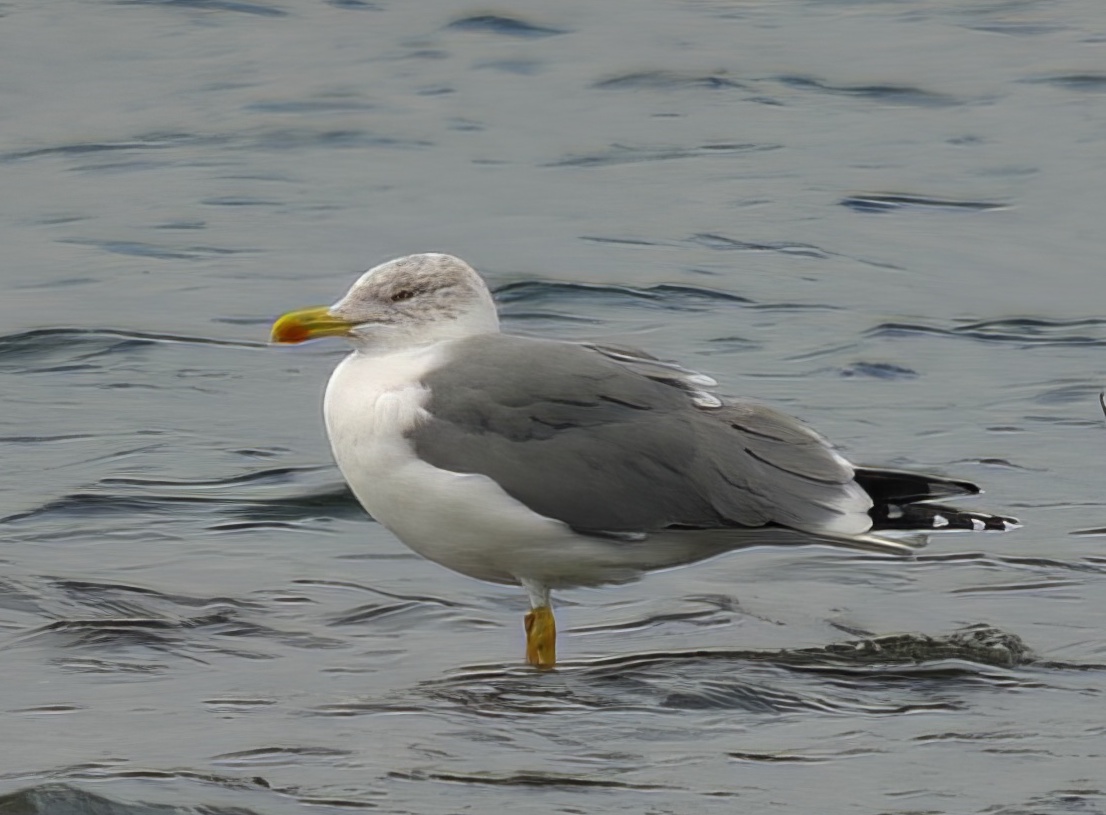
The Yellow-legged Gull (Larus michahellis) has only recently achieved wide recognition as a distinct species. It was formerly treated as a subspecies of either the Caspian gull L. cachinnans, or more broadly as a subspecies of the Herring Gull, L. argentatus. It is named after the German zoologist Karl Michahelles.
Although accepted as a full species there has been much disagreement. For example, British Birds magazine split Yellow-legged Gull from Herring gull in 1993 but included the Caspian gull in the former; the BOU however retained the Yellow-legged Gull as a subspecies of the Herring Gull until 2005. DNA research suggests that Yellow-legged Gull is actually closest to Great Black-backed Gull, L. marinus and Armenian gull L. armenicus, while Caspian gull is closer to Herring Gull and Lesser Black-backed Gull, L. fuscus. The IOC taxonomy followed Sangster et al (2005) in accepting the split.
It is interesting to note the accounts in past Lincolnshire Bird Reports which had historically included records of birds of “one or other of the yellow-legged races” within the account for Herring Gull, L. argentatus. The 1992 report was the first one to treat Yellow-legged Gull, Larus michahellis as a separate species (from Herring Gull) but following the taxonomy of the time there were still two sub-species, nominate cachinnans (Caspian Gull) and michahellis (Yellow-legged Gull). The 2003-2007 Rare & Scarce Bird Report is the first to record these two sub-species as full species: Yellow-legged Gull, L. michahellis, and Caspian Gull, L. cachinnans.
At the present time, two sub-species are recognised by IOC: Larus michahellis michahellis, sometimes referred to as Mediterranean Yellow-legged Gull, and Larus michahellis atlantis, sometimes referred to as Azorean Yellow-legged Gull (see a Lincolnshire record of that sub-species in this list). Much debate continues about the taxonomic relationships within this group. For details on identifying these difficult taxa see Garner and Quinn (1997).
Fortunately for county records amidst all this taxonomic change, the first definitive record of Yellow-legged Gull (then still a sub-species) was of a bird found dead at Holbeach Marsh in June 1983 that had been ringed as a nestling in Italy in May 1982. There has since been an upsurge in records with regular double figure flocks at various sites across the county. Large numbers can occur at some sites in the county, e.g. 65 were at Crowle/Eastoft on August 6th 2014. The species was said by The Atlas to occur in Lincolnshire at a rate of around 15 birds per year in the 1990s. Before that less attention was paid to it. An analysis in LBR 2012 showed that in the years 2010-12 it was occurring at a rate of 160 birds per year with birds all year round but a pronounced peak in July. In the 7 years from 2013 to 2019 the total annual monthly peaked counts ranged from 37 in 2018 to 172 in 2015 with an average of 140 per year. Interestingly the peak month of occurrence appears to have shifted from July to August from 2014 (chart below). For the three years to 2019 the annual rate fell to 50 birds a year. Whether this is a longer-term shift remains to be seen. During 2013-19 the largest counts were 38 in the Crowle/Eastoft area in August 2014 and 23 there in August 2015 and 29 at Norton Disney Pits in July 2016.
The global population size is unknown owing to recent taxonomic splits. The European population is estimated at 409,000-534,000 pairs, and the overall population trend is increasing, although some populations have stable or unknown trends (IUCN Red List data 2017). BTO ringing data indicate that birds occurring in Britain originate in continental Europe south to the Mediterranean and east to Poland. The chart below summarises the species’ seasonal pattern of occurrence, showing the marked late summer peak between mid-July and late August when there is a marked influx of juvenile birds.
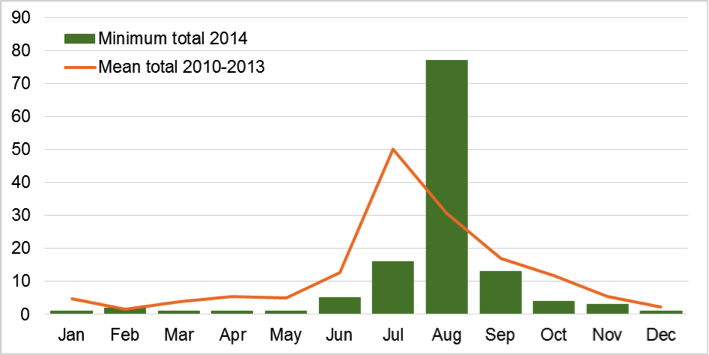
References
Encyclopedia of Life at http://eol.org/pages/2870492/details
Garner, M. and Quinn, D. (1997). Identification of Yellow-legged Gulls in Britain. British Birds 90: 25-62.
IUCN Red List of Threatened Species (2017) at http://www.iucnredlist.org/details/62030970/0.
Sangster, G., Collinson, J.M., Helbig, A.J., Knox, A.G. and Parkin, D.T. (2005). Taxonomic recommendations for British birds: third report. Ibis 147: 821-826.
(Account updated with reference to the new Birds of Lincolnshire (2021), September 2022)
